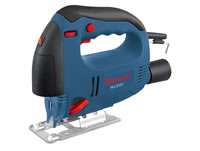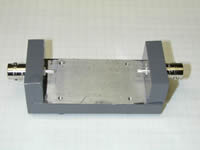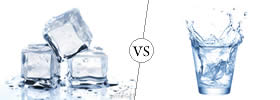Difference between Jig and Fixture
Key difference: A jig is a type of tool that is used to control the location and/or motion of another tool. A fixture, on the other hand, is a work-holding or support device, used to hold the work in place.
 In metalworking and woodworking, both jigs and fixtures are essential tools. They are often confused with each other; however, they are two different tools with different functions. A jig is a type of tool that is used to control the location and/or motion of another tool. A fixture, on the other hand, is a work-holding or support device, used to hold the work in place.
In metalworking and woodworking, both jigs and fixtures are essential tools. They are often confused with each other; however, they are two different tools with different functions. A jig is a type of tool that is used to control the location and/or motion of another tool. A fixture, on the other hand, is a work-holding or support device, used to hold the work in place.
According to Dictionary.com, a jig is described as “a plate, box, or open frame for holding work and for guiding a machine tool to the work, used especially for locating and spacing drilled holes.” A fixture is described as “any of various devices for holding work in a machine tool, especially one for machining in a straight line, as in a planer or milling machine,” as well as, “any of various devices for holding parts in certain positions during welding, assembly, etc.”
The main purpose of a jig is to provide repeatability, accuracy, and interchangeability in the manufacturing of products. It is mainly used to hold and guide another tool, such as a drill or a saw. The most common type of jig is the drill jig, which guides the drill bit for creating holes at desired locations. The fixture, on the other hand, is used to the work in a fixed location. It is a support device that is usually large and permanently attached to the work surface. The main purpose of a fixture is to ensure that the work piece does not move when the machine starts operating. A fixture can be unique, built to fit a particular part or shape.
However, there are devices that do both the work of a jig and a fixture. These machines are also called jigs, which is why many can’t actually tell the difference between a jig and a fixture.
There are many types of jigs, including machining jigs, woodworking jigs, tapering jigs, welders' jigs, jewelers' jigs, and many others. Some types of jigs are also called templates or guides.
An example of a jig is when a jig-saw is being used to cut a pattern or shape in a piece of wood. The fixture is the clamps that are holding the wood steady. However, due to the advent of automation and computer numerical controlled (CNC) machines, jigs are often not required because the tool path is digitally programmed and stored in memory.

Types of Fixtures:
- General Purpose - relatively inexpensive and can be used to hold a variety and range of sizes of workpieces (Examples: Vices, chucks, split collets).
- Special Purpose - designed and built to hold a particular workpiece for a specific operation on a specific machine or process.
Primary purposes of jigs and fixtures:
- Reduce the cost of production
- Maintain consistent quality
- Maximize efficiency
- Enable a variety of parts to be made to correct specifications
- Reduce operator errors
Image Courtesy: hongjutools.com, cliftonlaboratories.com









Comments
diffrents btween jig and fixtures
prasad
Tue, 04/22/2014 - 22:08
Add new comment